This was the annual wine tasting and fundraising dinner for the Band and Orchestra department of our school. For the event, I had prepared a selection of wines that I thought would best showcase the wide diversity of the Italian production. We started with two whites and some antipasti, followed by four reds served with beef braised in wine and a cheese platter. Finally, a sweet
passito wine and an almond and apricot cake ended the dinner and an extremely enjoyable evening.
The wines we tasted:
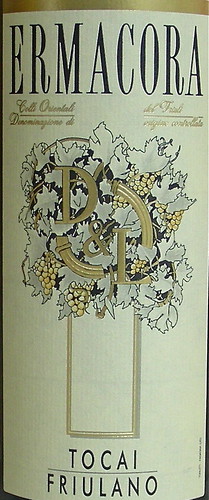
•
2006 Ermacora Tocai Friulano:
Tocai Friulano is a white grape native to the
Friuli region of Northeastern Italy. The wine is produced by
Azienda Agricola Ermacora, a small family owned winery in the Colli Orientali del Friuli district, just a few miles from the Slovenian border. My notes: light yellow color, ripe pear and sugar cane aromas on the nose, fresh acidity on the palate, mineral finish. Great with Prosciutto con Melone.
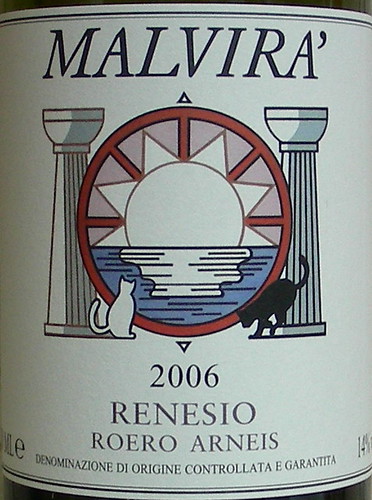
•
2006 Malvirá Roero Arneis Renesio:
Arneis is a rare and, until recently, almost extinct white grape cultivated in the
Roero area of the Piedmont wine region.
Malvirá is a small family estate in Roero. The name
Malvirá relates to the former location of the winery, which faced north instead of south:
mal stands for wrong and
virá for situated. My notes: straw color, flowery nose. Slightly fizzy at first, the wine has more body and complexity than the Tocai Friulano. Really good.
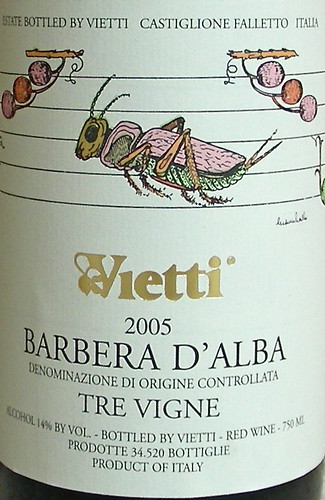
•
2005 Vietti Barbera d'Alba Tre Vigne: the
Vietti family has been making wines in Piedmont's Barolo region since the middle of the 19th Century. The Barbera d'Alba Tre Vigne comes from 35 year-old
Barbera vines sourced from three estate vineyards in Monforte, Barolo and Castiglione Falletto. My notes: bright red color, spices and black cherry on the nose, juicy on the palate, extremely well balanced and food friendly. Very good with the braised beef.
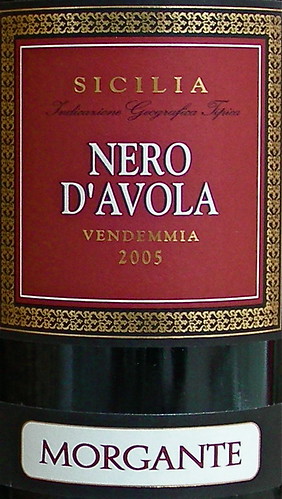
•
2005 Morgante Nero d'Avola:
Nero d'Avola is one of the main indigenous grapes of Sicily. The wine is produced by
Morgante, a winery located in the province of Agrigento, on the southern coast of Sicily. The property has 200 hectares of vineyards and almond trees growing at 300-500 meters above sea level. My notes: plum and prune on the nose with some dried herbs notes, savory and creamy on the palate, cinnamon and moka on the finish. Tasted wonderful with braised beef as well.
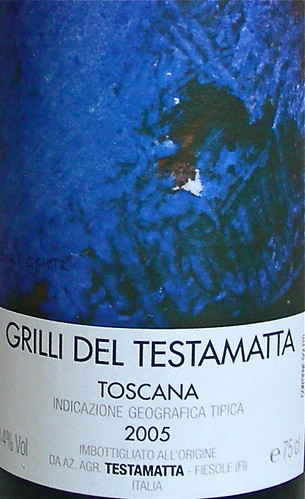
•
2005 Bibi Graetz Grilli di Testamatta:
Testamatta means
hot head and
Bibi Graetz, an artist that has become a winemaker, makes his wines in a powerful style. This
Super Tuscan is a classic Tuscan blend of 80% Sangiovese, 10% Colorino, 10% Canaiolo. My notes: dark color, rich berry nose, dense on the palate. Still very young, needs more cellaring time.
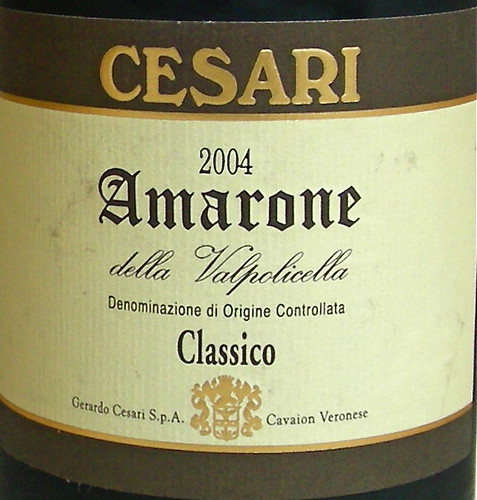
•
2004 Cesari Amarone della Valpolicella Classico:
Amarone is a unique red wine from the
Valpollicella wine region, in the province of Verona. It is made of grapes (usually a blend of Corvina, Rondinella, and Molinara) traditionally dried on straw mats. This drying process, which typically lasts 3 months, concentrates the juices within the grape and intensifies the flavors. My notes: dark color, nose of sweet plum, rich and spicy on the palate with notes of cinnamon, long finish, perfectly well balanced and really good with aged Parmesan cheese. Perhaps my favorite red wine of the evening.
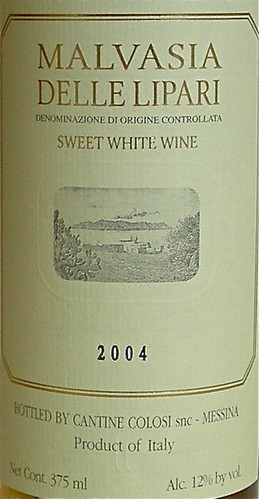
•
2004 Colosi Malvasia delle Lipari Passito:
Malvasia delle Lipari is produced in the
Lipari Island, the largest of the Eolian Islands. It is made from overripe Malvasia grapes that are then sun-dried for 10 to 15 days on large bamboo mats. My notes: deep golden color, aromatic muscat-like nose, luscious palate with a vibrant acidity. Superb with the almond and apricot cake.
We all had such a great time and were ready to meet again next year for another Band and Orchestra fundraising dinner. As for the theme, the decision was unanimous: Spanish wines. Not a problem for me, Spanish wines are awesome!
Technorati tags: wine food & drink
 Miner Family Vineyards is a small Napa Valley family-owned winery, well known for producing a portfolio of high-end wines. The winery has recently introduced a new label called La Diligence, actually a joint project between Miner and Domaine François Villard. François Villard is a young vintner from the Northern Rhône Valley and renowned for producing exceptional Viogniers and Syrahs from the Condrieu and Côte-Rôtie appellations. The name of the wine refers to this Franco-Californian joint venture: Diligence means Stagecoach in French
Miner Family Vineyards is a small Napa Valley family-owned winery, well known for producing a portfolio of high-end wines. The winery has recently introduced a new label called La Diligence, actually a joint project between Miner and Domaine François Villard. François Villard is a young vintner from the Northern Rhône Valley and renowned for producing exceptional Viogniers and Syrahs from the Condrieu and Côte-Rôtie appellations. The name of the wine refers to this Franco-Californian joint venture: Diligence means Stagecoach in French 





